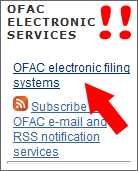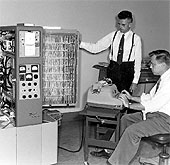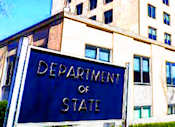 As the troubled Washington Times enters into what may be its final days, unless it accepts the cold embrace and re-emergence of its founder, the Rev. Sun Myung Moon, the paper has turned its back on some of it former friends and given a forum to, of all people, Gary Milhollin of the Wisconsin Project on Nuclear Arms. Even though much of export reform is in areas that have nothing to do with Nuclear Arms, Mr. Milhollin — quelle surprise — is no fan of any export reform at all
As the troubled Washington Times enters into what may be its final days, unless it accepts the cold embrace and re-emergence of its founder, the Rev. Sun Myung Moon, the paper has turned its back on some of it former friends and given a forum to, of all people, Gary Milhollin of the Wisconsin Project on Nuclear Arms. Even though much of export reform is in areas that have nothing to do with Nuclear Arms, Mr. Milhollin — quelle surprise — is no fan of any export reform at all
Gary Milhollin, director of the Wisconsin Project on Nuclear Arms Control, called the new policy a “defense industry bailout.”
“The financial industry and the auto industry had their bailouts, now it is the defense industry’s turn,” he said.
Mr. Milhollin also said the United States steadily relaxed arms-export controls since the end of the Cold War. “We have already reduced controls to the bone,” he said.
I can only imagine that Mr. Milhollin hasn’t glanced at the Commerce Control List or the United States Munitions List recently or even at all if he can say we have already reduced controls to the bone with a completely straight face.
The number of items on the CCL that have no business being there is, as most readers of this blog will know, significant. My favorite example, of course, is “horses by sea” controlled by ECCN 0A980. But no survey of the oddities of the CCL would be complete without mentioning controls on items easily obtainable throughout the world such as triethanolamine (ECCN C350.c.9) used in cosmetics such as shaving cream. Other unique oddities of the list include thumbcuffs, whips, cattle prods, fingerprint inks, pumps and valves, muzzle-loading pistols and rifles, and optical sights for BB guns.
And the USML has its own share of unnecessary controls, starting with, of course, its legendary controls on military railway trains which have pretty much gone the way of muzzle-loading pistols, catapults, jousting lances, and military calvary brigades as items of warfare. Others include weapons silencers, flash suppressors, rifle parts, body armor, powder bags, and cartridge casings, all of which are readily available outside the United States.
None of this sounds to me like these two lists have been “cut to the bone.”
 Last week, this blog reported OFAC’s announcement at the BIS Update that an electronic licensing system for agricultural and medical exports under the Trade Sanctions Reform and Export Enhancement Act of 2000 (“TSRA”) would debut “soon.” And by “soon” they meant “real soon,” because over the past several days the new system stealthily sneaked onto the OFAC site and is now, it would appear, ready to accept applications.
Last week, this blog reported OFAC’s announcement at the BIS Update that an electronic licensing system for agricultural and medical exports under the Trade Sanctions Reform and Export Enhancement Act of 2000 (“TSRA”) would debut “soon.” And by “soon” they meant “real soon,” because over the past several days the new system stealthily sneaked onto the OFAC site and is now, it would appear, ready to accept applications.
 Posted by
Posted by  Category:
Category: 

 One of the stated goals of export control reform is to unify the export licensing systems used by the Treasury, Commerce and State Departments. Each system — except, of course, for Treasury’s dead-tree system — has it advocates with some rooting for D-Trade, the system used by State, and others rooting for SNAP-R, the Commerce System, to prevail in this war of the Titans. In fact, the winning licensing system will not be any of these but is instead an electronic licensing system that likely is completely unfamiliar to 99.9 percent of exporters.
One of the stated goals of export control reform is to unify the export licensing systems used by the Treasury, Commerce and State Departments. Each system — except, of course, for Treasury’s dead-tree system — has it advocates with some rooting for D-Trade, the system used by State, and others rooting for SNAP-R, the Commerce System, to prevail in this war of the Titans. In fact, the winning licensing system will not be any of these but is instead an electronic licensing system that likely is completely unfamiliar to 99.9 percent of exporters. As the troubled Washington Times enters into what may be its
As the troubled Washington Times enters into what may be its  Yesterday the Department of State’s Directorate of Defense Trade Controls (“DDTC”) updated the
Yesterday the Department of State’s Directorate of Defense Trade Controls (“DDTC”) updated the 

